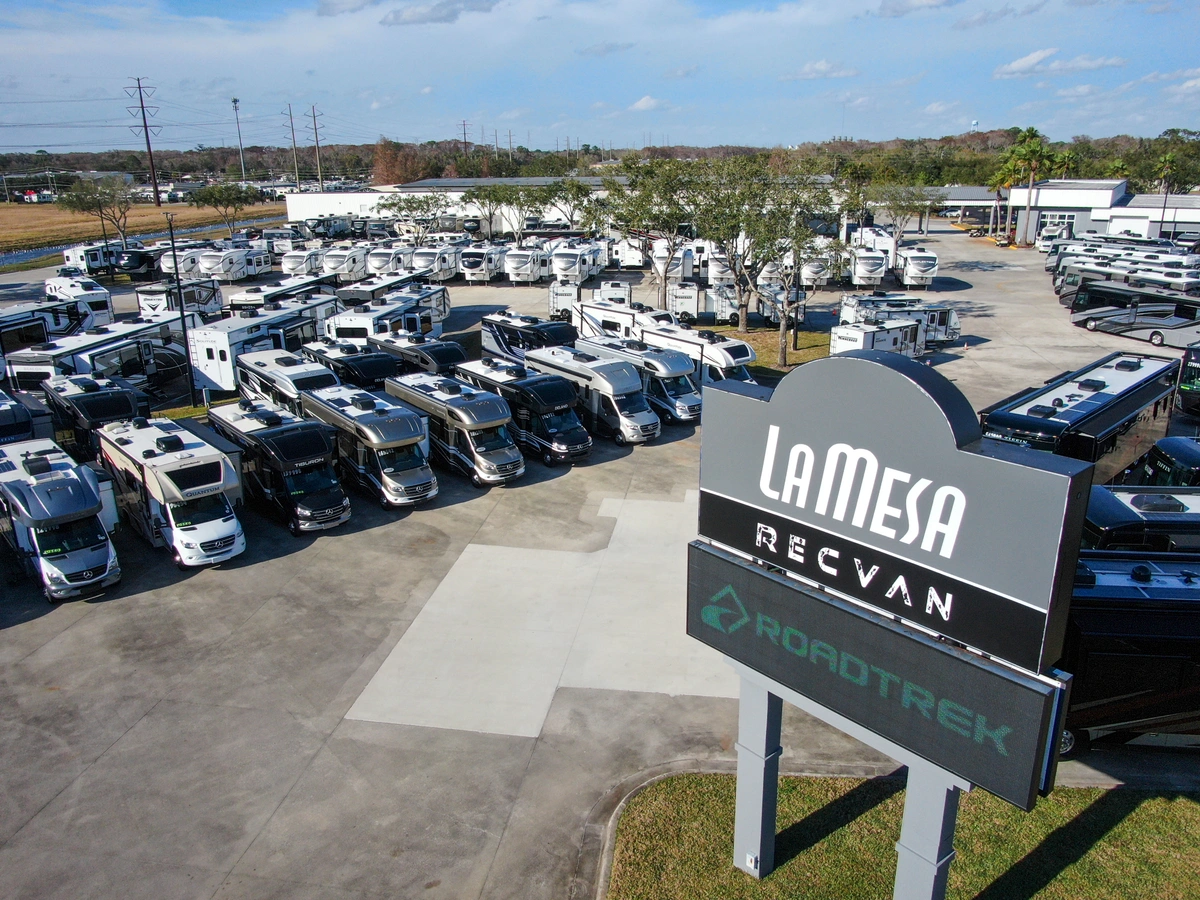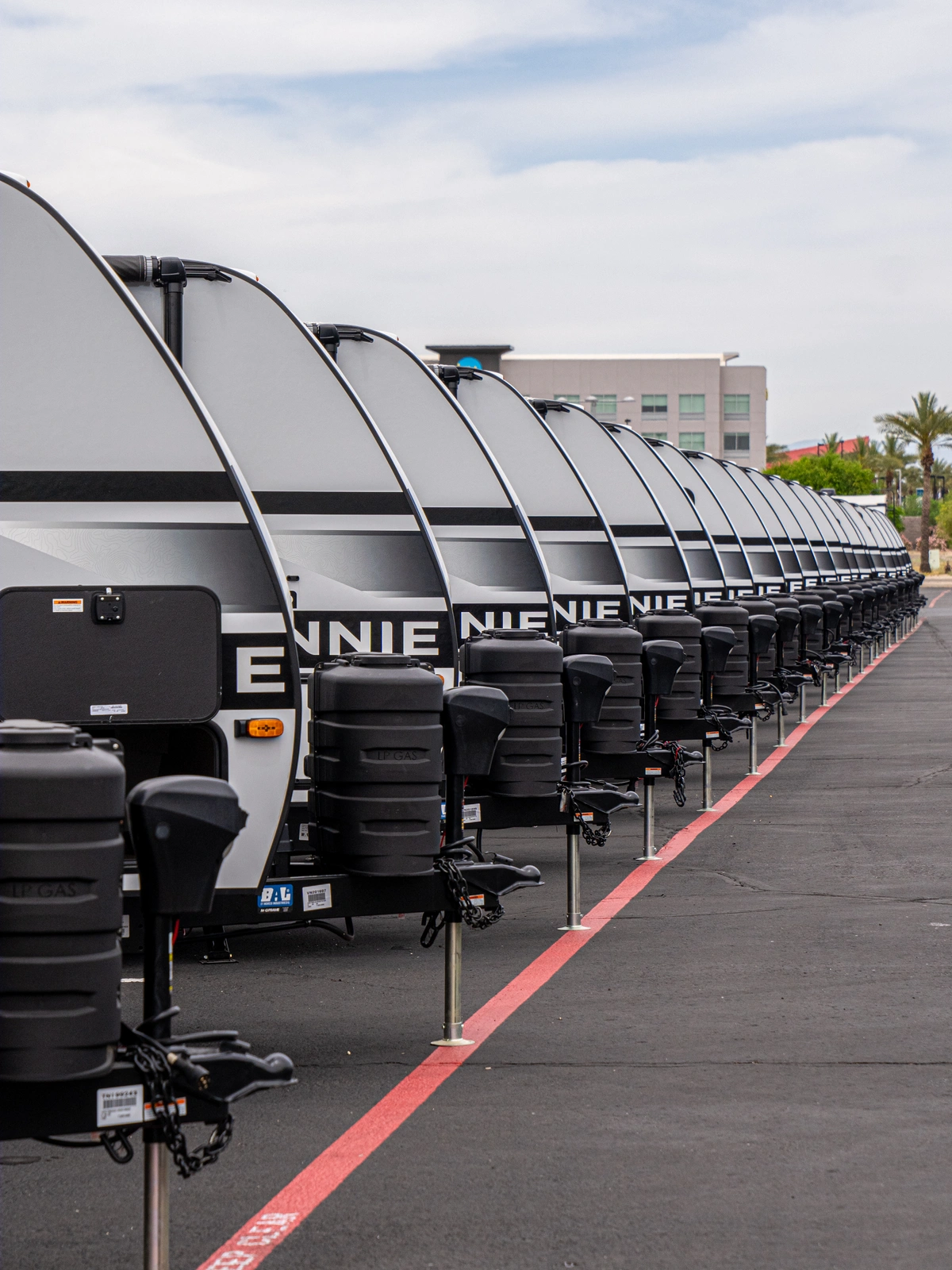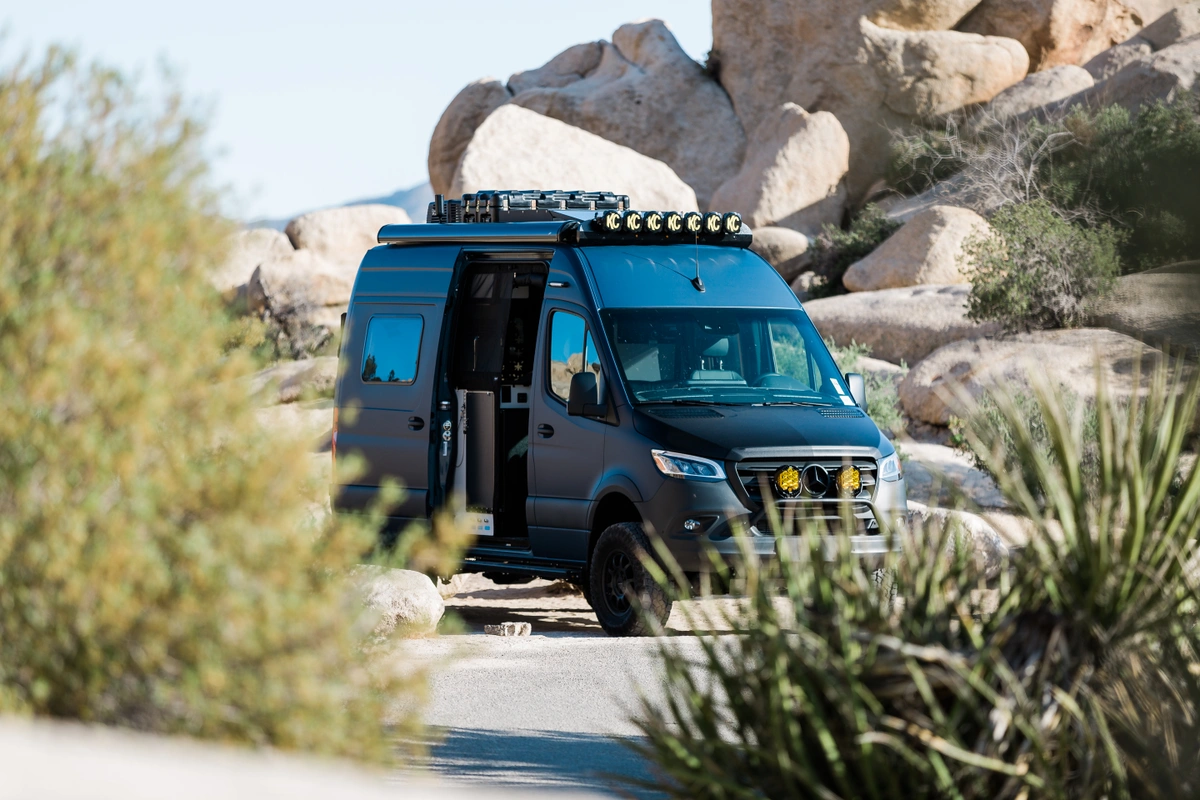The first time I sat in our 43-foot motorhome, I couldn't imagine driving such a big beast. While it seemed a little overwhelming at first, it didn't take too long to become knowledgeable and confident in our big rig RV. A big rig is usually classified as any RV that is longer than 40 feet, but many of the following tips can apply to other sizes and types of RVs as well.
There is a learning curve with driving a large RV because it is not just like driving a car. The extra size and weight affect everything from how you turn to where you can go to how fast you get there. Taking the time to understand how to drive a big rig will make your travels less stressful and will keep you and others safe on the road.
Guest Post by Robin Buck
Know Your RV
Before you even set out, you should know all of your RV's specific dimensions, including the height, length, width, and weight. When you drive a car, you don't have to worry about fitting on roads or under bridges, but things change when you are in a big rig. Your RV manuals should have this information, or your RV dealercan assist you in finding it.
Focusing on the road and traffic around you is extremely important when you are driving. Therefore, you want to be familiar with your RV dashboard display (including warning lights) and know what the various switches and knobs do. Get comfortable with things like windshield wipers, cruise control, engine brakes, and headlights so you can keep your mind on driving and not looking around to figure things out. Also, make sure to adjust your mirrors, cameras, and seat before heading out on the road.
Prepare the RV
Another important thing to do before you drive is make sure that the RV itself is ready to go. Just like a car you should keep up with regular servicing and correct tire pressures. We always walk around the motorhome with our checklist to check on things like cargo doors are closed, satellite antenna is down, and cords and hoses are unplugged. Inside we make sure items are secured so that they don't move around as we drive.
Practice First
At first learning to drive an RV can seem scary, so doing some practice will help you feel more comfortable before taking your first trip. We planned a short drive to a big, empty stadium parking lot to get used to the size and handling of our rig. You can set up cones or use the parking lines to monitor your position as you practice making turns and even backing up. It is helpful to have one person outside working on hand signals and/or communication with walkie talkies.
One thing that is very different on a big rig is turning radius. The driver's seat is in front of the tires instead of behind them like in a car. This changes the RV pivot point and necessitates waiting longer to make your turns. Additionally, because your RV is a much longer vehicle, you should understand that the rear tires will take a more inward path than the front tires during those turns. Finally, note your RV's tail swing, which is how much the back of your RV swings out when you turn. Figuring out all of these important maneuvering concepts is best done in an empty lot rather than learning the hard way and hitting something on the road.
Plan Before You Go
Taking the time to plan out your route and stops will save time and frustration in the long run. We look for truck stops for easier fueling and make sure we know how to get in and out. The satellite feature on Google Maps really helps to check this. Also, we use a trucker's atlas and a good RV GPS program to check our planned route for any clearance or weight limit issues. If we can, we avoid traveling through busy cities during rush hour and driving at night or in bad weather.
On the Road
One of the key tips for driving is to always be aware of your position on the road. A big rig is wider than a car, so you will need to drive closer to the left lane marker to be centered in the lane. Since you don't have a rear-view mirror in an RV, you will learn to use your side mirrors to help monitor your lane position and blind spots. As you drive, keep both hands on the wheel and try to focus down the road to anticipate obstructions or hazards in time to react.
Speaking of reacting, an RV takes much longer to stop than a car due to its heavier weight and momentum. Knowing that, you will want to allow extra distance between you and other vehicles. A good rule of thumb is to allow 4 seconds plus 1 second for each 10 mph over 40 mph. We travel at 63 mph as it not only helps in braking but also gives us good handling and the best gas mileage at speed.
As you drive, always allow extra room for passing and be prepared for side wind from semi-trucks that pass you. Also, use the whole acceleration lane to get up to speed before entering highways. When you are in charge of such a big vehicle on the roads you want to be alert and make your best decisions. So make sure to take frequent breaks to stay at your best. We change drivers every 1.5-2 hours and try not to drive more than 300 miles per day.
Ready For Fun
These tips give you a general overview of things we have learned while driving our big rig. There are many good videos and blogs online that demonstrate the concepts discussed above, particularly on maneuvering tips. Better yet, some people prefer to take an RV driving course for personalized instruction. Just like with other things, the more you practice the better you will do. Before long, driving your big rig will feel like second nature and you will be ready for fun RV adventures!
Robin and her husband, Mike, are Air Force veterans and empty nesters who travel full-time in their Entegra Anthem motorhome. Always ready to explore, they love nature and wildlife, meeting new friends, and discovering America's many hidden gems. Robin chronicles their adventures and experiences on her travel blog RVing with Robin.


